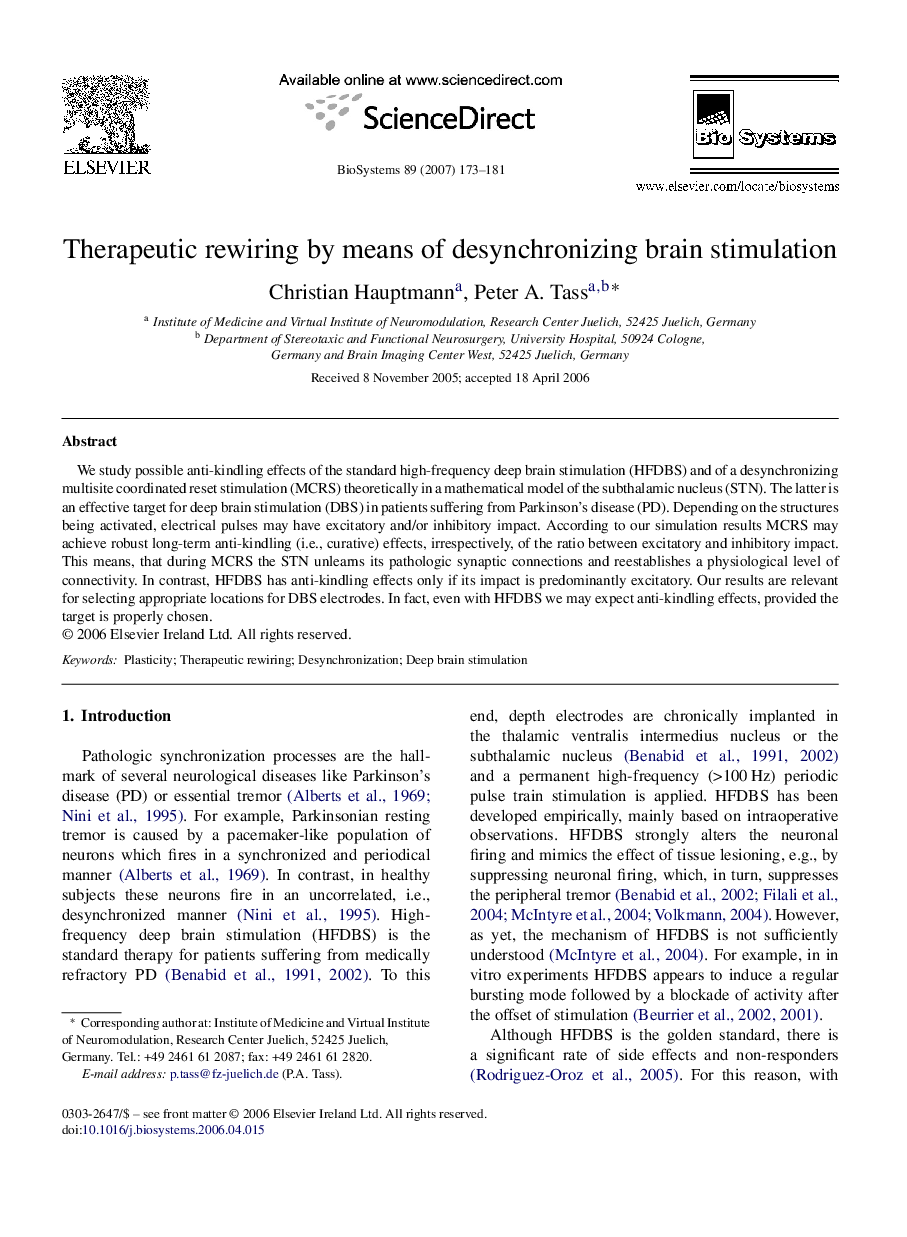| Article ID | Journal | Published Year | Pages | File Type |
|---|---|---|---|---|
| 2077155 | Biosystems | 2007 | 9 Pages |
We study possible anti-kindling effects of the standard high-frequency deep brain stimulation (HFDBS) and of a desynchronizing multisite coordinated reset stimulation (MCRS) theoretically in a mathematical model of the subthalamic nucleus (STN). The latter is an effective target for deep brain stimulation (DBS) in patients suffering from Parkinson’s disease (PD). Depending on the structures being activated, electrical pulses may have excitatory and/or inhibitory impact. According to our simulation results MCRS may achieve robust long-term anti-kindling (i.e., curative) effects, irrespectively, of the ratio between excitatory and inhibitory impact. This means, that during MCRS the STN unlearns its pathologic synaptic connections and reestablishes a physiological level of connectivity. In contrast, HFDBS has anti-kindling effects only if its impact is predominantly excitatory. Our results are relevant for selecting appropriate locations for DBS electrodes. In fact, even with HFDBS we may expect anti-kindling effects, provided the target is properly chosen.
